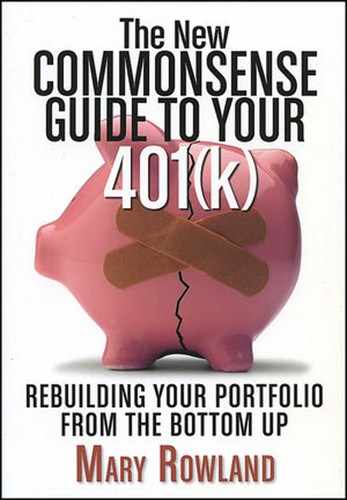VESTING REFERS to the ownership of the money in your retirement plan and can mean different things depending on the style of the plan. In a pension plan, if you quit your job or are terminated before becoming entirely vested, you can't collect any of the money set aside in your retirement fund. When you are entirely vested, retirement benefits must be paid to you, even if you leave the company years before retirement. If you return to a former employer after a "break in service," or after working somewhere else, you must be given credit for your prior service.
Many employers see vesting as a way to reward loyal employees for sticking with the company and as a way to keep employees on board. But under traditional defined benefit pensions, vesting by itself does not mean much in the way of benefits. Even an employee who had worked ten years for a company—say from age twenty-two to age thirty-two—might have very little in the way of vested benefits, certainly not enough to turn down a good career opportunity.
A 401(k) plan functions differently from a defined benefit pension plan. The money an employee contributes to a 401(k) plan is vested immediately. Whenever that employee leaves the employer, he has the right to take that money with him. But the money an employer contributes to the account—the company match or profit-sharing dollars—is a different category, controlled by the employer.
An employer may provide immediate vesting on that money, too. But it is more likely to use a scaled vesting schedule that dictates how long an employee must work in order to have ownership of the company match. Employers may provide vesting in one year or two years, but they are not permitted to establish vesting schedules that go beyond the maximum periods set forth in section 411 of the Internal Revenue Code. These guidelines, which were revised in 2008, permit two choices: three-year "cliff vesting" or two-to-six-year "graduated vesting".
Under cliff vesting, the employee is not vested in any of the employer's contribution until he completes three years of service. Then he is immediately 100 percent vested in all employer contributions. If he leaves after that point, the money belongs to him. Under graduated vesting, the employee becomes invested in 20 percent of the employer contribution after two years, 40 percent after three years, 60 percent after four years, 80 percent after five years, and 100 percent in six years.
It is probably not worth your while to stick with an employer to become vested in a traditional pension plan, particularly if you are young. Benefits in these pensions are heavily weighted toward older, higher-paid employees. If you've been working only five years, you may have earned a few hundred dollars to be paid forty-some years from now.
But with your 401(k) plan, it becomes easy to see what you gain by waiting until you're vested in the plan. Suppose your employer matches 50 percent of your contribution up to 6 percent of your salary, and the account operates under a three-year cliff-vesting period. You earn $80,000 and contribute the full 6 percent, or $4,800 per year. Your employer contributes 50 percent, or $2,400 per year. After three years, your employer's contribution totals $7,200 plus the earnings on that money. If you leave after two and a half years, you leave all that money on the table.
That shouldn't be enough money to persuade you to give up a great career move, but it's certainly enough to deserve your attention. One of the great benefits of 401(k) plans is that they are portable. Even if you work for half a dozen different employers, you can still earn the same benefits that you might have earned working for just one. Check your company's vesting schedule and keep it in mind when planning your career.
